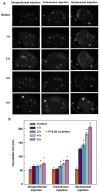Unique Roles of Gold Nanoparticles in Drug Delivery, Targeting and Imaging Applications
- PMID: 28858253
- PMCID: PMC6151763
- DOI: 10.3390/molecules22091445
Unique Roles of Gold Nanoparticles in Drug Delivery, Targeting and Imaging Applications
Abstract
Nanotechnology has become more and more potentially used in diagnosis or treatment of diseases. Advances in nanotechnology have led to new and improved nanomaterials in biomedical applications. Common nanomaterials applicable in biomedical applications include liposomes, polymeric micelles, graphene, carbon nanotubes, quantum dots, ferroferric oxide nanoparticles, gold nanoparticles (Au NPs), and so on. Among them, Au NPs have been considered as the most interesting nanomaterial because of its unique optical, electronic, sensing and biochemical properties. Au NPs have been potentially applied for medical imaging, drug delivery, and tumor therapy in the early detection, diagnosis, and treatment of diseases. This review focuses on some recent advances in the use of Au NPs as drug carriers for the intracellular delivery of therapeutics and as molecular nanoprobes for the detection and monitoring of target molecules.
Keywords: disease diagnosis; drug delivery; gold nanoparticles; imaging; molecular nanoprobes.
Conflict of interest statement
The authors declare no conflict of interest.
Figures




References
-
- Verissimo T.V., Santos N.T., Silva J.R., Azevedo R.B., Gomes A.J., Lunardi C.N. In vitro cytotoxicity and phototoxicity of surface-modified gold nanoparticles associated with neutral red as a potential drug delivery system in phototherapy. Mater. Sci. Eng. C. 2016;65:199–204. doi: 10.1016/j.msec.2016.04.030. - DOI - PubMed
-
- Fratoddi I., Venditti I., Cametti C., Russo M.V. How toxic are gold nanoparticles? The state-of-the-art. Nano Res. 2015;8:1771–1799. doi: 10.1007/s12274-014-0697-3. - DOI
Publication types
MeSH terms
Substances
LinkOut - more resources
Full Text Sources
Other Literature Sources

